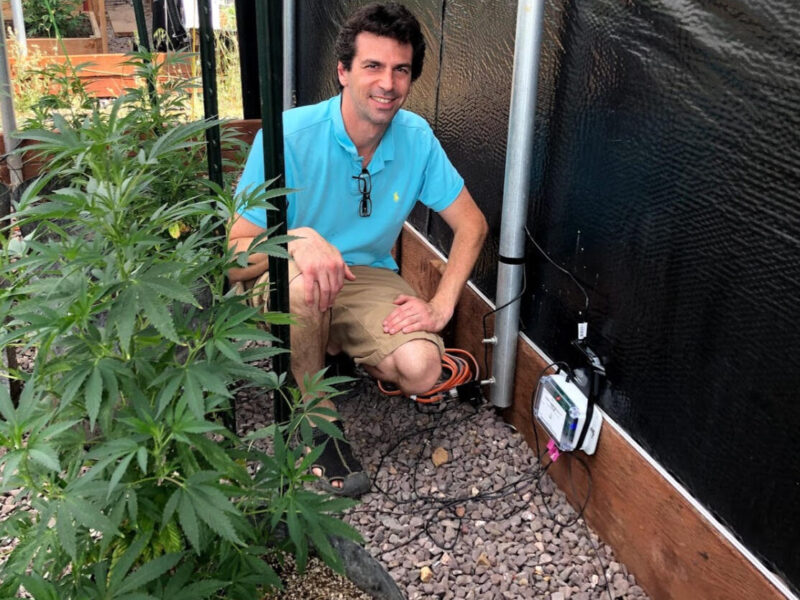15th October 2012
By Andy Whiteley
Co- Founder ofWake Up World
Looking for a healthy way to get more from your garden? Like to know your food is free of thepesticidesand other nasties that are often sprayed on commercial crops? Re-growing food from your kitchen scraps is a good way to do it!
There’s nothing like eating your own home- grown vegies, and there are heaps of different foods that will re- grow from the scrap pieces that you’d normally throw out or put into your compost bin.
It’s fun. And very simple … if you know how to do it.
Just remember … the quality of the “parent†vegetable scrap will help to determine the quality of the re-growth. So, wherever possible, I recommend buying local organic produce, so you know your re-grown plants are fresh, healthy and free of chemical andgenetic meddling.
Leeks, Scallions, Spring Onions and Fennel
You can either use the white root end of a vegetable that you have already cut, or buy a handful of new vegetables to use specifically for growing.
Simply place the white root end in a glass jar with a little water, and leave it in a sunny position. I keep mine in the kitchen window. The green leafy part of the plant will continue to shoot. When it’s time to cook, just snip off what you need from the green growth and leave the white root end in water to keep growing. Freshen up the water each week or so, and you’ll never have to buy them again.
Lemongrass
Lemongrass grows just like any other grass. To propagate it, place the root end (after you’ve cut the rest off) in a glass jar with a little water, and leave it in a sunny position.
Within a week or so, new growth will start to appear. Transplant your lemongrass into a pot and leave it in a sunny outdoor position. You can harvest your lemongrass when the stalks reach around a foot tall – just cut off what you need and leave the plant to keep growing.
Celery, Bok Choi, Romaine Lettuce & Cabbage
Similar to leeks, these vegetables will re-grow from the white root end. Cut the stalks off as you normally would, and place the root end in a shallow bowl of water – enough to cover the roots but not the top of your cutting. Place it in a sunny window position, occasionally spraying your cutting with water to keep the top moist.
After a few days, you should start to see roots and new leaves appear. After a week or so, transplant it into soil with just the leaves showing above the level of the soil. The plant will continue to grow, and within a few weeks it will sprout a whole new head.
Alternatively you can plant your cutting directly into soil (without starting the process in water) but you will need to keep the soil very moist for the first week until the new shoots start to appear.
Ginger
Ginger is very easy to re-grow. Simply plant a spare piece of ginger rhizome (the thick knobbly bit you cook with) in potting soil with the newest (ie. smallest) buds facing upward. Ginger enjoys filtered, not direct, sunlight in a warm moist environment.
Before long it will start to grow new shoots and roots. Once the plant is established and you’re ready to harvest, pull up the whole plant, roots and all. Remove a piece of the rhizome, and re-plant it to repeat the process.
Ginger also makes a very attractive house-plant, so if you don’t use a lot of ginger in your cooking you can still enjoy the lovely plant between harvests.
Potatoes
Re-growing potatoes is a great way to avoid waste, as you can re-grow potatoes from any old potato that has ‘eyes’ growing on it. Pick a potato that has robust eyes, and cut it into pieces around 2 inches square, ensuring each piece has at least one or two eyes. Leave the cut pieces to sit at room temperature for a day or two, which allows the cut areas to dry and callous over. This prevents the potato piece from rotting after you plant it, ensuring that the new shoots get the maximum nutrition from each potato piece.
Potato plants enjoy a high-nutrient environment, so it is best to turn compost through your soil before you plant them. Plant your potato pieces around 8 inches deep with the eye facing upward, and cover it with around 4 inches of soil, leaving the other 4 inches empty. As your plant begins to grow and more roots appear, add more soil. If your plant really takes off, mound more soil around the base of the plant to help support its growth.
Garlic
You can re-grow a plant from just a single clove – just plant it, root-end down, in a warm position with plenty of direct sunlight. The garlic will root itself and produce new shoots. Once established, cut back the shoots and the plant will put all its energy into producing a tasty big garlic bulb. And like ginger, you can repeat the process with your new bulb.
Onions
Onions are one of the easiest vegetables to propagate. Just cut off the root end of your onion, leaving a ½ inch of onion on the roots. Place it in a sunny position in your garden and cover the top with soil. Ensure the soil is kept moist. Onions prefer a warm sunny environment, so if you live in a colder climate, keep them in pots and move them indoors during frostier months.
As you use your home-grown onions, keep re-planting the root ends you cut off, and you’ll never need to buy onions again.
Sweet Potatoes
When planted, sweet potato will produce eye-shoots much like a potato. Bury all or part of a sweet potato under a thin layer of soil in a moist sunny location. New shoots will start to appear through the soil in a week or so. Once the shoots reach around four inches in height, remove them and re-plant them, allowing about 12 inches space between each plant. It will take around 4 months for your sweet potatoes to be ready. In the meantime, keep an eye out for slugs… they love sweet potatoes.
To propagate sweet potatoes, it is essential to use an organic source since most commercial growers spray their sweet potatoes to prevent them from shooting.
Mushroom
Mushrooms can be propagated from cuttings, but they’re one of the more difficult vegies to re-grow. They enjoy warm humidity and nutrient-rich soil, but have to compete with other fungus for survival in that environment. Although it is not their preferred climate, cooler environments give mushrooms a better chance of winning the race against other fungi.
Prepare a mix of soil and compost in a pot (not in the ground) so your re-growth is portable and you can control the temperature of your mushroom. I have found most success with a warm filtered light during the day and a cool temperature at night. Just remove the head of the mushroom and plant the stalk in the soil, leaving just the top exposed. In the right conditions, the base will grow a whole new head. (In my experience, you’ll know fairly quickly if your mushroom has taken to the soil as it will either start to grow or start to rot in the first few days).
Pineapple
To re-grow pineapples, you need to remove the green leafy piece at the top and ensure that no fruit remains attached. Either hold the crown firmly by the leaves and twist the stalk out, or you can cut the top off the pineapple and remove the remaining fruit flesh with a knife (otherwise it will rot after planting and may kill your plant). Carefully slice small, horizontal sections from the bottom of the crown until you see root buds (the small circles on the flat base of the stalk). Remove the bottom few layers of leaves leaving about an inch base at the bottom of the stalk.
Plant your pineapple crown in a warm and well drained environment. Water your plant regularly at first, reducing to weekly watering once the plant is established. You will see growth in the first few months but it will take around 2-3 years before you are eating your own home-grown pineapples.
And one for the kids….. ‘Pet’ Carrot Tops!!
I call this a ‘pet’ because the plant that re-grows from planting a carrot top will NOT produce edible carrots, only a new carrot plant. The vegetable itself is a taproot which can’t re-grow once it has been removed from the plant. But it makes an attractive flowering plant for the kitchen, and they’re easy and lots of fun to grow…. for kids of all ages!
Cut the top off your carrot, leaving about an inch of vegetable at the root. Stick toothpicks into the sides of the carrot stump and balance it in a glass or jar. Fill the glass with water so that the level reaches the bottom of the cutting. Leave the glass in filtered, not direct, sunlight and ensure water is topped up to keep the bottom of your cutting wet. You’ll see roots sprout in a few days, and you can transplant your ‘pet’ carrot into soil after a week or so.
Your success re-growing lovely fresh vegies from scrap may vary, depending on your climate, the season, soil quality and sunlight available in your home or garden. And some vegies just propagate easier than others do. In my experience, a bit of trial and error is required, so don’t be afraid to do some experimenting. Get your hands dirty. It’s lots of fun! And there’s nothing like eating your own home-grown vegies.



'16 Foods That’ll Re-Grow from Kitchen Scraps' has no comments
Be the first to comment this post!